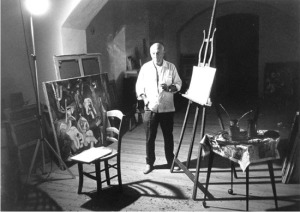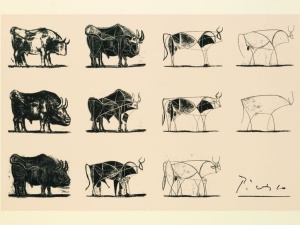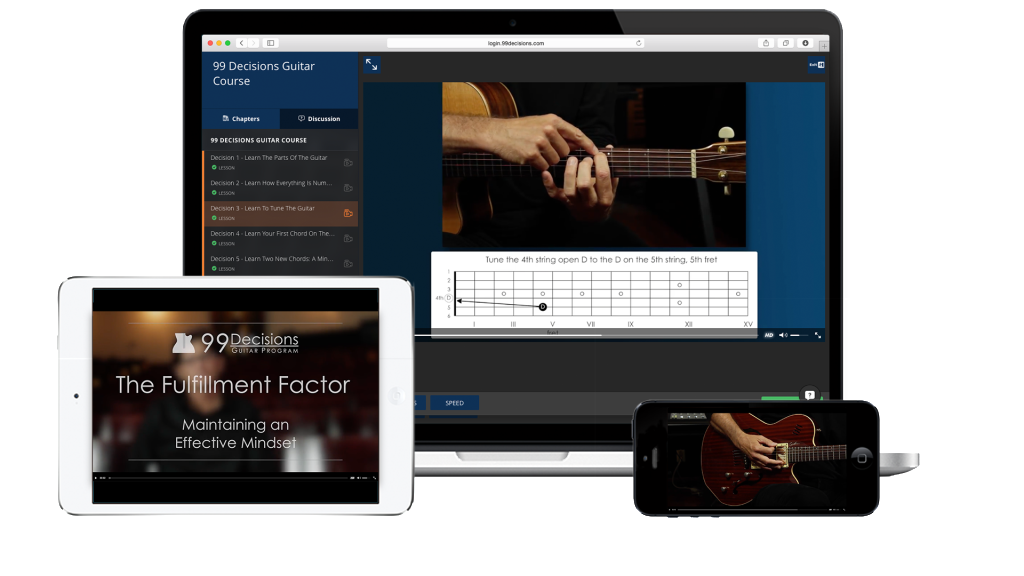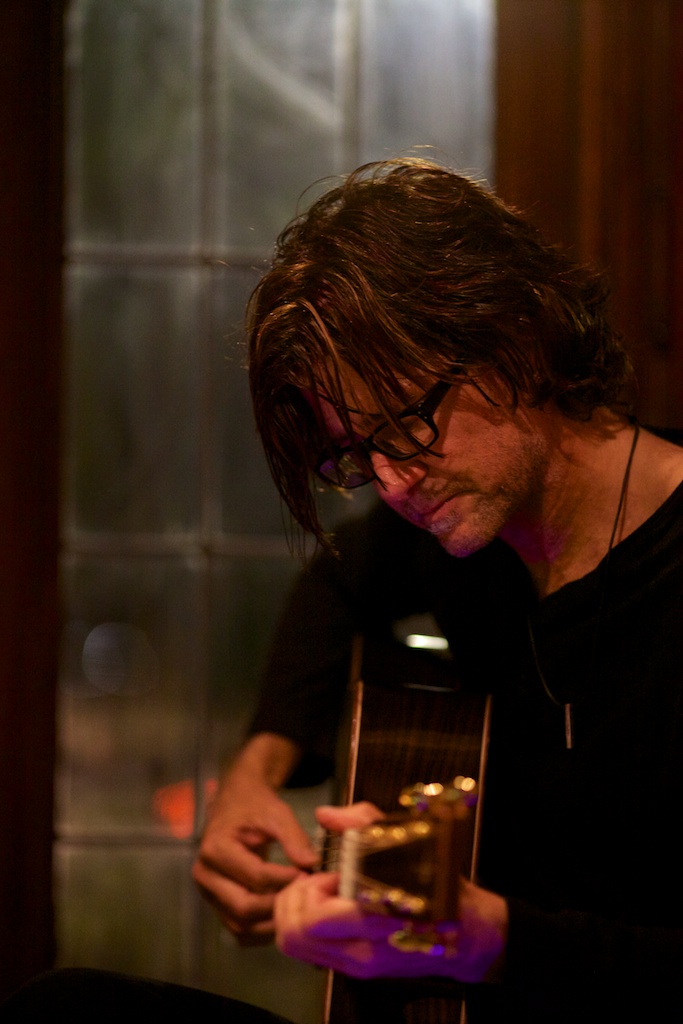In 1945, Pablo Picasso created his work, “The Bull” – a suite of eleven separate lithographs that eloquently transform a fully realized image of a bull into a minimalistic rendering.
I’ve seen this in person at the Norton Simon Museum in Pasadena, California, where the works reside. As I walked past each of the drawings in the exhibit, it fascinated me how he conjured this transmutation from the explicit to the abstract.
I use Picasso’s “The Bull” as a visual analogy to a good many things when I teach music. One analogy involves the transmutation of a scale pattern into actual music.
As a guitar educator, I am very familiar with the oft asked question…
“How do you make scales sound cool?”
It’s a very good question.
Let’s start with making sure you understand what a scale and a scale pattern on the guitar really are.
A scale is a group of notes that the ear/brain perceives to have a particular “quality” … major, minor, happy, sad, bluesy, etc., and one of the notes gets to be “team leader”, which means that note sounds like “home base” to your ears. That “home base” note is the key of that scale.
Okay, admittedly not my most academic explanation, however it explains it in a way that is most basic and not too technical or theory based.
If you don’t understand any of that then I suggest you do some internet research and get yourself to a place where you truly understand the concept of a musical scale. Or, you can email me & I’ll be happy to elaborate for you personally from my brain to yours.
Next, you must understand that a scale pattern on the guitar represents all the notes of that scale that are reachable in a given position.
Make sure you truly understand that statement…
A scale pattern on the guitar represents all the notes of that scale that are reachable in a given position.
Let’s pull the bus over for a minute & make sure you’re clear about the term, “position” and “reachable”
Position is a specific guitar term that refers to where you hand is on the fretboard. It is defined by whatever fret number your first finger is on. Then the second, third & fourth finger line-up on the subsequent frets. So for example, in fifth position your first finger is on the fifth fret, and this applies to all six strings. This diagram visually demonstrates all the notes you can comfortably reach in the 5th position…
In a perfect world, your four fingers would always line up on the four subsequent frets. However, it is not a perfect world so the term position is used even if your remaining fingers spread out over as many frets as you can reach.
This next example is in the 7th position but the other fingers are stretched out. It’s not any kind of scale, it’s just an example of stretching your fingers out while still being in a particular position.
The main point here is that, since you can never reach the entire fretboard at once, you want to be mindful about approaching the fretboard ergonomically… meaning that, the reality is, you are only able to reach a span of four frets, give or take a fret.
(maybe more frets for some, but for right now, we’re talking typical people playing typical scale patterns)
So a scale pattern is the array of notes of that scale that is reachable by your hand in a given position.
If you wish to play guitar in a cognitive way, i.e. learning & practicing scales, it is very important to think in terms of positions.
I say again to you…
A scale pattern on the guitar represents all the note of that scale that are reachable in a given position.
So here is the ubiquitous Minor Pentatonic pattern in the key of G…
If you we’re a painter, you would want to have all of your different color paints & all of your different kinds of brushes right there next to you so that you could reach them right away as you are painting your art.
It is very disruptive to the creative flow if you have to stop what you are doing & go into another room & find what you need & then go back to what you are doing.

Look at Mr. P!… he doesn’t have to move more than a few feet to get to anything he needs to paint those abstract geetars & bulls.
In this same manner, the scale pattern provides all the notes of that scale right there under your fingertips, within a given position. This is extremely convenient to you, the musical artist.
But then there’s that important question we mentioned earlier…
What do you do with all these scale notes to make them sound cool?
Answer: Anything you want to!
But this answer is based in the infinite & people tend to lock up in their brains when they have all the options in the world.
(Quick… what is your all time favorite guitar solo? your favorite band? your favorite movie?)
Allow me to walk you through a process that will take you from boring old grumpy cat scale pattern into super-cool awesomeness guitar lick.
But first, another art analogy…
There is an oft quoted saying that the sculptor, when asked how he created the beautiful statue of the goddess, states, “I simply chiseled away anything that isn’t goddess!”
(there are many variation on this quote & its origins)
So here you are, staring at your big chunk of marble, wondering how to carve it into a goddess of a guitar riff…
Let’s start with creating a simple riff.
(or lick or phrase or motif… it’s a vernacular free-for-all out there, ya know)
I’m going to take away some of the notes & just work with these…
Let’s add a pull off between the two notes on the second string…
(we’re going to switch to TAB here)
Cool, but it could be cooler.
How about a string bend on the 3rd string, 5th fret?…
(the number 1 at the top of the arrow means bend one whole step)
Next, pick the 2nd string, 3rd fret… then the 3rd string, 5th fret… then the 3rd string, 3rd fret…
And let’s finish it off with a pull off & a slide with the notes on the 4th string…
All together looks like this…
Go back and forth between playing the entire scale pattern & playing the phrase. Watch your left hand while you are playing.
Congratulations!
You have taken a dry sterile scale pattern and turned it into a cool hip musical phrase.
Now all you have to do is repeat this process many many times with every scale pattern you know, for the rest of your life.
(BTW, you might want to document your phrases in TAB or musical notation)
The artistic process is a fascinating study. There is an ever-present dichotomy of a free flowing anoesis approach & the good ol’ “paint by numbers” approach… otherwise known as cognition. What we did here in this article is more of the latter, of course, but this is the kind of practice that is necessary in order to show your mind & body how the process works. By creating art in a controlled & non-temporal state, you will eventually being able to create freely in the moment. (You see what I did there? I provided links to the definitions. No need to thank me… really.)
Picasso seemed to have the creative process down cold.
And he sure painted a lot of guitars, given that he didn’t actually play the guitar… at least according to my research on the internets.
That just shows you how cool guitars are.
Everyone wants to be a guitarist… but if you can’t play one, paint one.













1 Comment
Matthew
November 13, 2015Found this while researching for this article…
http://www.fastcodesign.com/3034240/how-apple-uses-picasso-to-teach-employees-about-product-design
Someone say it!…
Great minds think alike.
Leave A Response